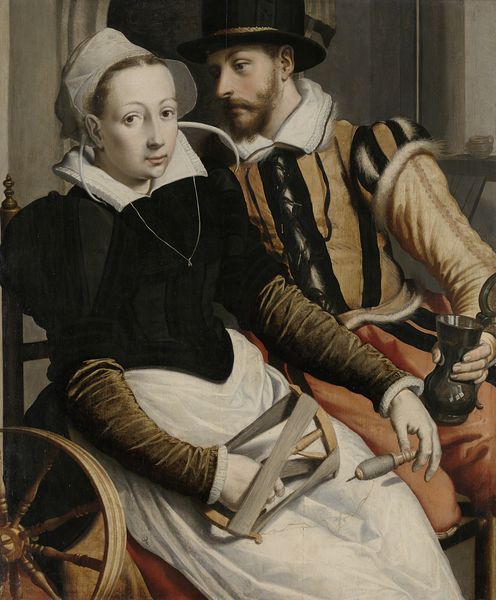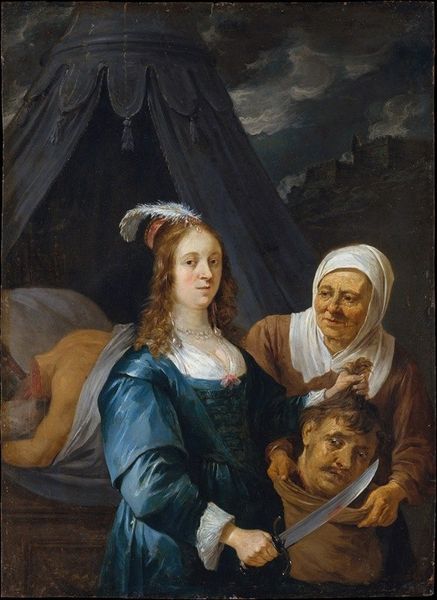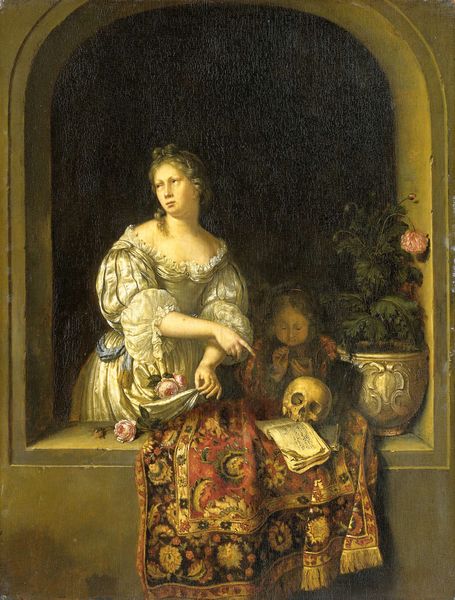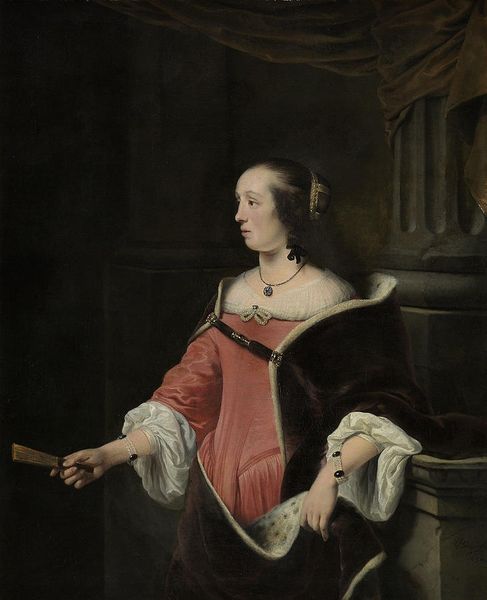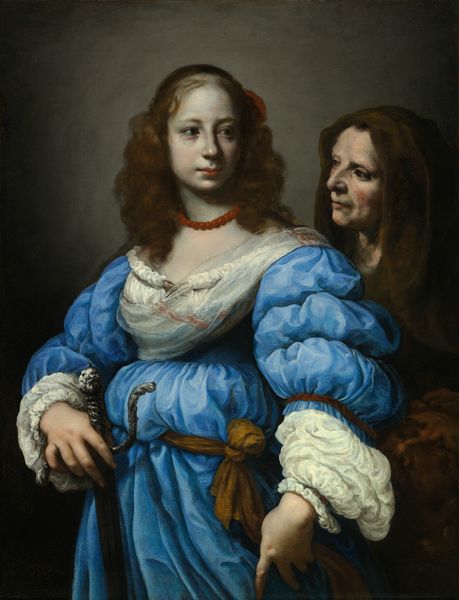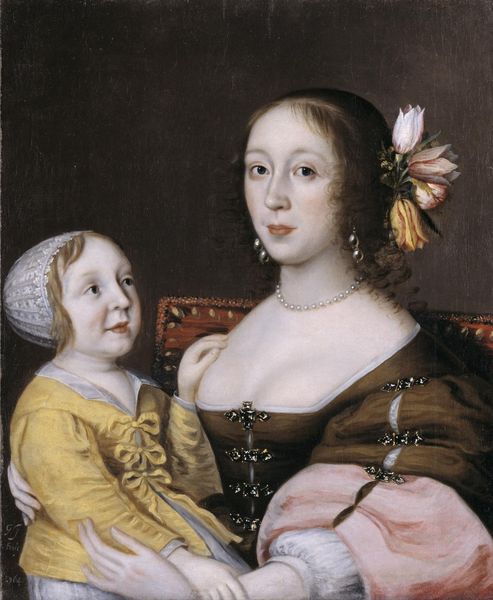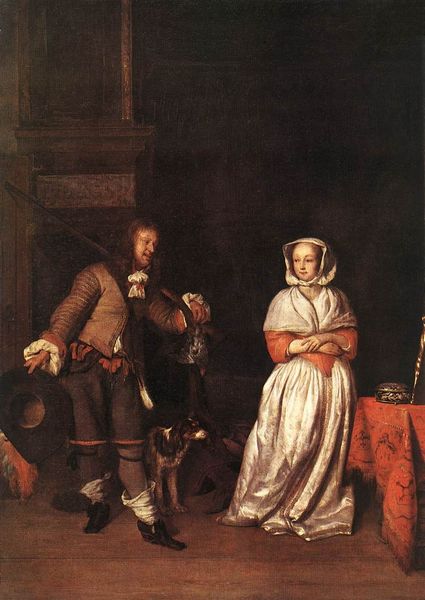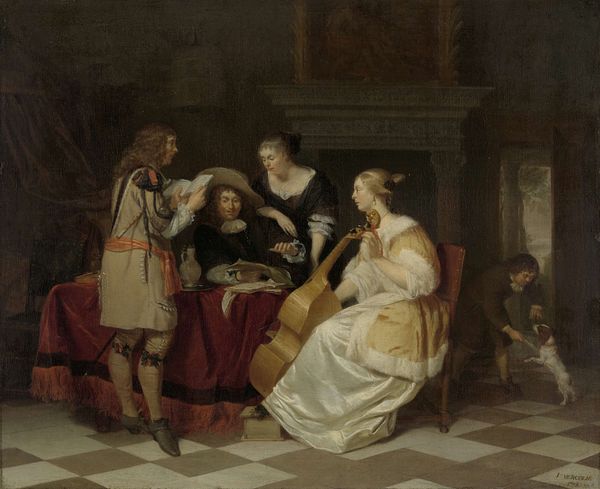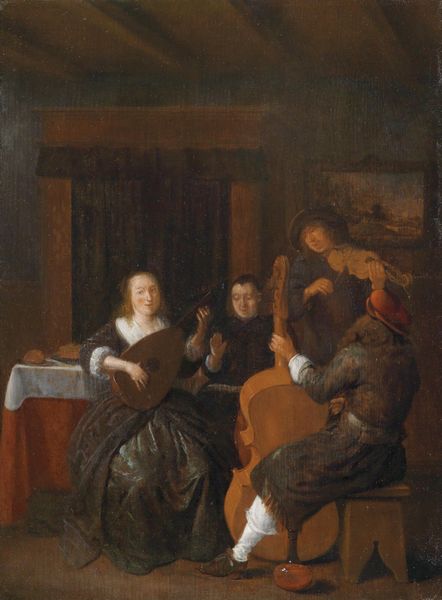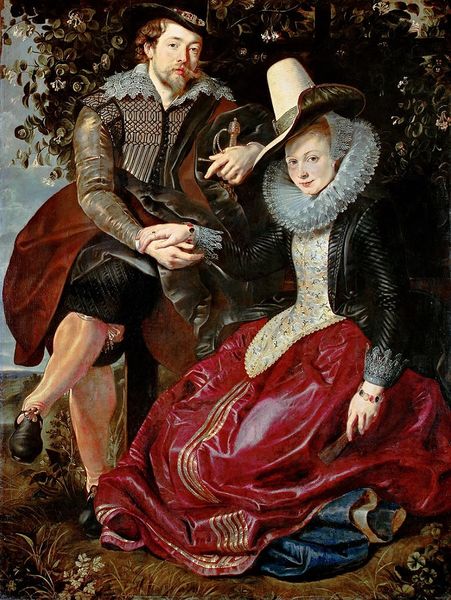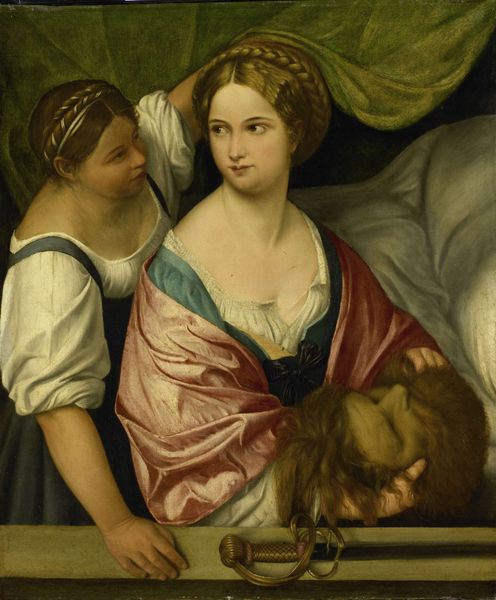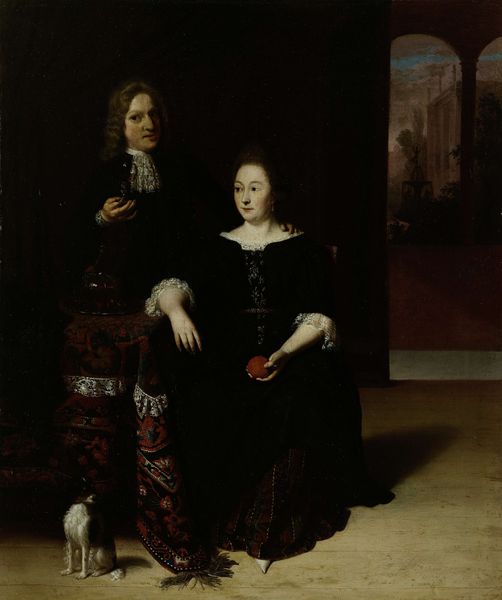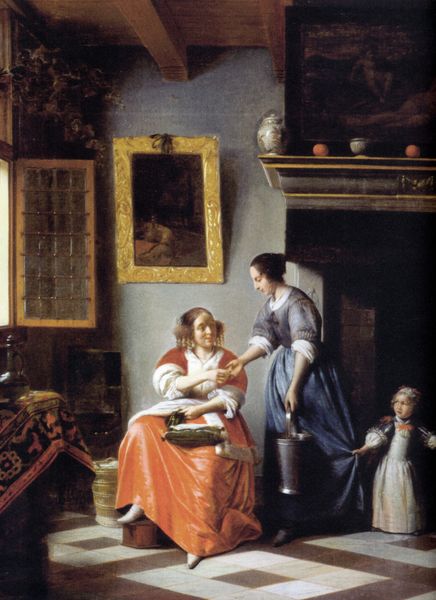
painting, oil-paint
#
portrait
#
gouache
#
baroque
#
painting
#
oil-paint
#
figuration
#
facial painting
#
painting painterly
#
genre-painting
#
watercolor
Dimensions: height 36 cm, width 30 cm
Copyright: Rijks Museum: Open Domain
Curator: Oh, the satin in this piece! There is a tactile opulence; observe how Frans van Mieris the Elder used light to model the folds in "A Man and a Woman" from 1678. It's quite remarkable, wouldn't you agree? Editor: Indeed! At first glance, it presents an aura of prosperity, the careful construction suggesting an almost theatrical stillness. The composition, rigidly balanced and almost symmetric, lends itself to that feel. Curator: Van Mieris masterfully renders a theatrical narrative with material symbols of wealth. The peach the man offers is no accident; it is a known signifier for temptation. The dog signifies loyalty while the peacock suggests vanity. All traditional, of course, for portraits of this class and era. Editor: And how the artist directs our gaze with that dramatic red curtain draped overhead—its velvet echoing and exaggerating the intimacy within the frame. It’s an almost cloying romanticism, emphasized by the couple's restrained expression and the small, precise brushstrokes. It feels less real, somehow. Curator: Consider then the implications behind these expressions. The slight upturn of the woman's mouth, meeting the man's expectant gesture; it presents an orchestrated harmony built on established understandings of societal dynamics, hinting to traditions beyond what the immediate setting may portray. Editor: True, but the formal qualities make me resist any sincere reading of emotional depth. There is something detached about its display—it lacks raw expressiveness. What catches my eye most, though, are the textural juxtapositions; note how he handles the interplay between rigid architecture and soft flesh; cold stone meeting delicate peach. Curator: Van Mieris excelled, I agree, in evoking symbolic power by these meticulous renderings of domestic details. It brings to the forefront ideas around power, possession, and morality prevalent at that time; an emotional depth is present but cloaked, or carefully masked, to suit decorum. Editor: Yes, masked, perfectly placed in a formal setting as if waiting for a dramatic performance to commence. I see in the precise execution more than simple decoration but carefully planned arrangements; the painting transcends just reflecting a surface realism but delves into societal tensions in a world teetering on social displays. Curator: A perspective well argued. What has most interested me has been the convergence of codified symbols married seamlessly within a domestic portrayal, reflecting how art of that time could encode layered meanings beneath deceptively plain façades. Editor: Absolutely; and through its refined artistry we also come to find those tensions held frozen—forever to reflect our curiosities toward aesthetics of human performance in gilded cages.
Comments
No comments
Be the first to comment and join the conversation on the ultimate creative platform.
